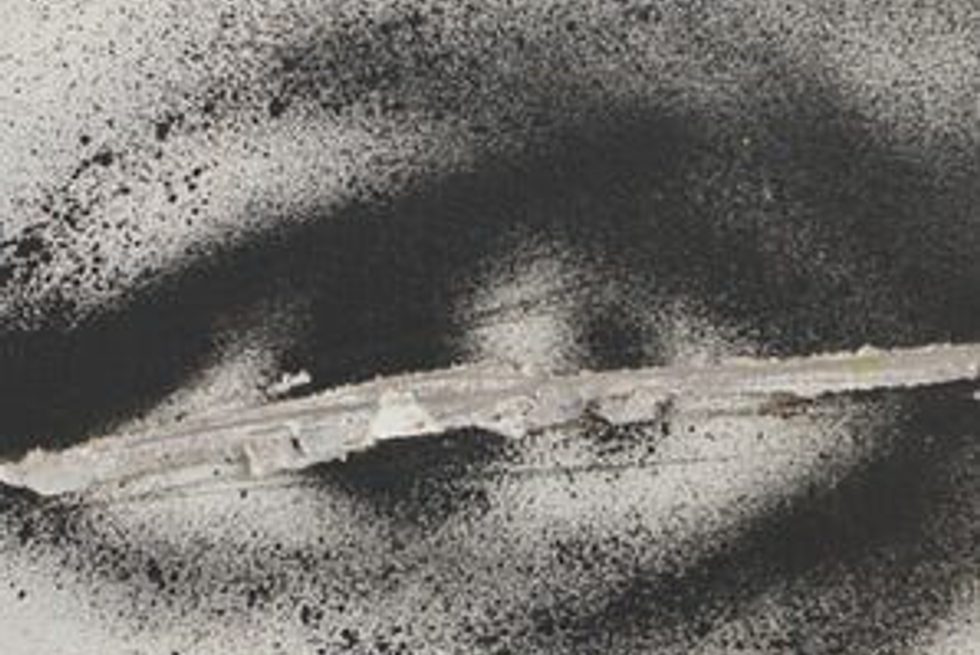
And if seeing was fire, I required the plenitude of fire,
And if seeing would infect me with madness, I madly wanted that madness.
–Maurice Blanchot
Robert Desjarlais’s (2018) latest book, The Blind Man: A Phantasmography, is a fever-dream anthropology of limit-experience, of “an encounter that wrenches the subject from itself.” Desjarlais-as-phantom meditates on the interplay between perception and imagination, developing a negative phenomenology of absence. The story centers around a nonencounter with a man who may or may not be blind, who was captured in the anthropologist’s photograph and who, in turn, captivates his imagination. Desjarlais returns to the photograph again and again, imagining who the man might be, but instead of conducting ethnographic research supported by detailed life histories, Desjarlais here does a kind of anti-ethnography: an inversion of investigation in which the fluctuating relation between imagination and perception becomes the grounds for investigation.
There is a kind of madness to the writing, as Desjarlais, thinking with Maurice Blanchot, becomes increasingly infected by his own ruminations on questions of vision and blindness. Soon, strange things start happening. The author’s eyeglasses break. He dreams and wakes up clawing at his eyes. He begins to fear that he will blind himself. On one occasion, he exits the subway and starts to see strange flashes of light. Is he, too, going blind, by way of psychosomatic mimesis? Who is the blind man, really?
. . . a phenomenology focused on “situations of intensity, impossibility, and limit which have the effect of undermining the self, dissolving or annihilating the subject, more or less ‘tearing’ or ‘wrenching’ the subject from itself.”
Desjarlais’s early work in the late 1990s and early 2000s marked a moment of innovation for phenomenological anthropology and its applications to medical and psychological anthropology. Through his work in the Nepal Himalayas and in a Boston homeless shelter, Desjarlais (1992, 1997, 2003) developed a critical phenomenological approach to the study of sensory experience in the context of illness and healing. Yet, even early on, Desjarlais was drawing on phenomenology to explore the limits of experience. For example, in his article “Struggling Along,” Desjarlais (1994) deconstructs the concept of experience to show the liberal assumptions of interiority on which it is built. In this most recent and extreme experiment with phenomenology, Desjarlais abandons presence entirely to develop a phenomenology of absence, traces, and nonpresence, which, in a nod to Derrida, he calls phanomenology. “Classical phenomenology,” Desjarlais writes, “tends to affirm the status and stability of selfhood by attending to the significance of everyday experiences of perception, language, and body.” In response, Desjarlais turns instead to what he describes as a negative phenomenology, that is, a phenomenology focused on “situations of intensity, impossibility, and limit which have the effect of undermining the self, dissolving or annihilating the subject, more or less ‘tearing’ or ‘wrenching’ the subject from itself.” This book forum brings together seven anthropologists whose work considers themes of images, imagination, and perception to reflect on The Blind Man and its provocations.
References
Desjarlais, Robert. 1992. Body and Emotion: The Aesthetics of Illness and Healing in the Nepal Himalayas. Philadelphia: University of Pennsylvania Press.
_____. 1994. “Struggling Along: The Possibilities for Experience among the Homeless Mentally Ill.” American Anthropologist 96, no. 4: 886–901.
_____. 1997. Shelter Blues: Sanity and Selfhood among the Homeless. Philadelphia: University of Pennsylvania Press.
_____. 2003. Sensory Biographies: Lives and Deaths Among Nepal’s Yolmo Buddhists. Berkeley: University of California Press.
_____. 2018. The Blind Man: A Phantasmography. New York: Fordham University Press.
Posts in This Series

Baroque Proliferations
This is a wild book. There is no better word to describe it, really. Wild as in unsettling, riveting, sweeping you off your feet. Wild as in roller-coaster ride... More

Blind Spot, Observed
Probably May 2017. Robert Desjarlais’s phantasmography had me enthused. I am swirling in it: fascinated and intrigued, I think I wrote. We had recently met, her... More

Imagining Ethnography
Robert Desjarlais’s The Blind Man is a beautifully written and provocative book. The work challenges and complicates ethnography as a genre, stretching its boun... More

Phantasmographic Possibilities
There are elements of Robert Desjarlais’s provocative book, The Blind Man, that anthropologists will find unorthodox, if not unseemly, most obviously his decisi... More

The Datum: Theory and the Feverish Madness of Vision
Troubling the dominant critique of vision as an objectifying and distancing sense, Maurice Merleau-Ponty (1968, 75) suggested that “there is a sort of madness i... More

The Spiraling Image
The value of an image is measured by the extent of its imaginary aura.—Gaston Bachelard Through diary-like inscriptions and photographs, mostly of his distant e... More

To Look Straight On, Standing to the Side
To look straight on, standing to the side. I suppose I mean this in two ways. The first is how I approached Robert Desjarlais’s magnificent book. I sat reading ... More